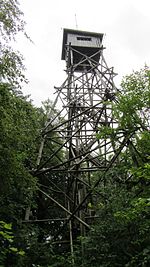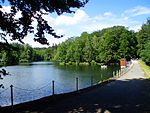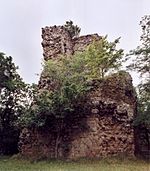Große Teufelsmühle
GernrodeHarz district geography stubsNatural monuments in Saxony-AnhaltRock formations of Saxony-Anhalt

The Große Teufelsmühle is a natural monument on the Viktorshöhe near Friedrichsbrunn in the Harz Mountains of central Germany. The name means "Great Devil's Mill". It is a tor, a granite rock formation that displays typical spheroidal or "mattress" weathering. The Große Teufelsmühle is a protected monument. Next to it is a checkpoint (no. 189) in the Harzer Wandernadel hiking system. In the vicinity is another rock formation, the Kleine Teufelsmühle. The shape of the rocks has led to a legend that links it with the ruins of a mill occupied by the devil.
Excerpt from the Wikipedia article Große Teufelsmühle (License: CC BY-SA 3.0, Authors, Images).Große Teufelsmühle
Paulwiesenweg,
Geographical coordinates (GPS) Address Nearby Places Show on map
Geographical coordinates (GPS)
| Latitude | Longitude |
|---|---|
| N 51.684833333333 ° | E 11.079527777778 ° |
Address
Paulwiesenweg
06485
Saxony-Anhalt, Germany
Open on Google Maps








